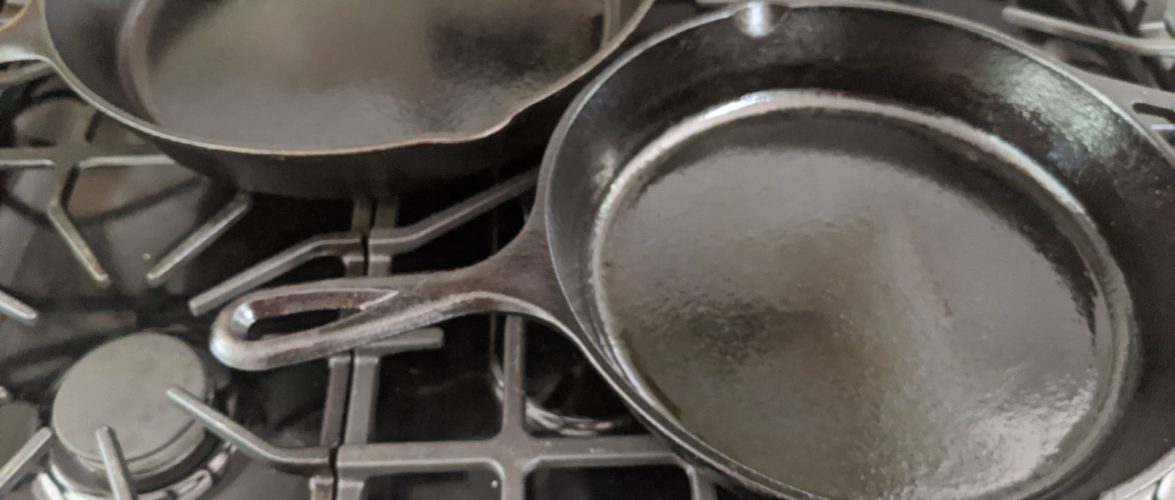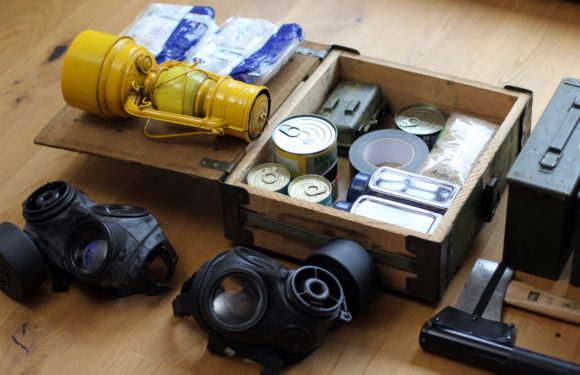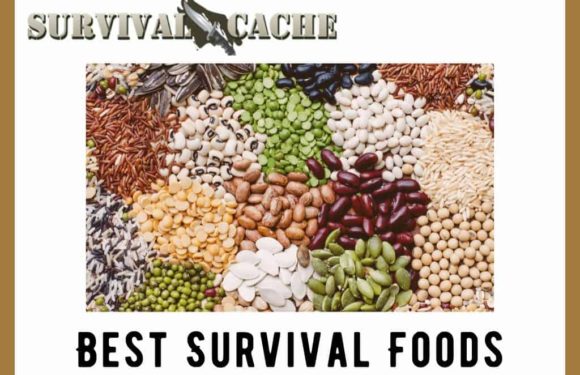
I am a big proponent for cast iron. It is rugged, durable and is great for cooking. Plus, it’s cheap. You can buy a Lodge 10.5 or 12 inch skillet in the $30 range and it will last you a lifetime. I use cast iron all the time at home and whenever I go camping and it is gear you should have in your prepper inventory.
Seasoning Cast Iron
All cast iron cookware must build up the seasoning on the surface of the pan. Seasoning is a layer of fat and oil that has been carbonized during the heating process. The seasoning is what makes them non-stick.
This is the part where a lot of people start to lose interest. This process is neither gross or difficult. Anything that could be considered bad is killed by the heat and the carbonization process.
Today, most cast iron cookware comes pre-seasoned and you can start cooking with them right away. When you are done cooking, you clean the skillet by hand. You do not have to use soap, but you can use some if you think it’s necessary. For anything stuck to the bottom, you can use a scraper or you can put a think layer of water in the bottom and heat it up for a few minutes. The hot water will loosen the food items and will make it easier to clean.
To dry the cookware, use a paper towel and dry it completely. I put the cookware back on the stovetop and heat it up to ensure all the moisture is gone. After it’s dry, I put in a teaspoon or two if flax seed oil and spread it all over. I leave it on the heat for a few minutes it allow the pores in the metal to absorb the oil.
Some people get upset when they dry the pan and see a dark residue on the paper towel. It is just the seasoning and is perfectly normal. This is not un-sanitary. It’s just the way the cast iron care process works.
Survival Benefits of Cast Iron
As mention previously, cast iron is rugged. It is also heavy which helps keep the cookware from being knocked over. You can also stick the cookware right on top of the coals. It also holds heat longer than other cookware so if you take if off the heat, you food will stay warm longer.
It is also very versatile. When you mention cast iron, most people think eggs, bacon and fried chicken. The truth is you can bake breads and desserts in them as well. I use them for everything except tomato based meals. Tomatoes have high acidity and it eats away at the seasoning more than other foods. You can still use it for tomatoes and I would in a survival situation, but in my everyday life, just to keep things simple, I will use another type of skillet.
The Cons
There are some things to consider. Firstly, they are heavy. An average 12 inch cast iron skillet can weigh around 8 pounds. I recommend having a 10 and 12 inch skillet and a dutch oven; for all 3 items, you are looking at almost 30 pounds. These are not items you will be putting in a bug out bag. If space or weight are issues, consider other options.
In a true survival situation, you may be limited to the types of fat you have access to. This mean relying on the foods you cook to help build the seasoning. Also, if you are on the move or in a perpetual camping situation, keeping the pans dry could be a challenge.
Conclusion
As a reminder, this site is mainly focused on sheltering in place. For this situation, cast iron is perfect. If you do not have any, I recommend you give one a try. Start with a 10.5 or 12 inch skillet and spend some time with it. Use it in the oven for baking as well as on the stove top.
All of my cast iron is made by Lodge. They have been making them since 1896. Die hard cast iron people swear by the vintage cookware with smoother surfaces than today’s versions. If you want to spend $60 – $100 for a 60 year old skillet, go right ahead.
The two skillets I have can be found on the Lodge store on Amazon.
I plan on adding an entire section on this site for cast iron that will include detailed care instructions as well as recipes you can try out.






